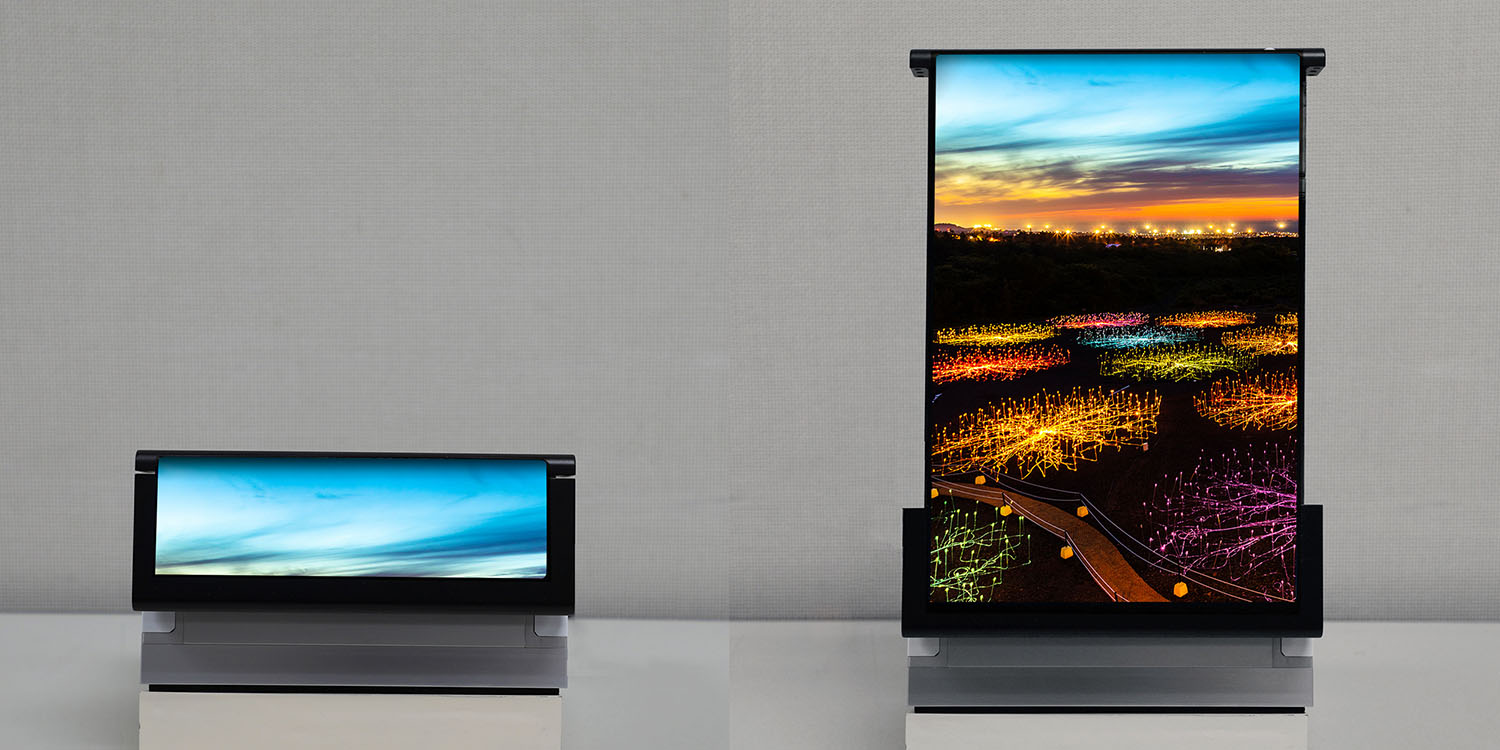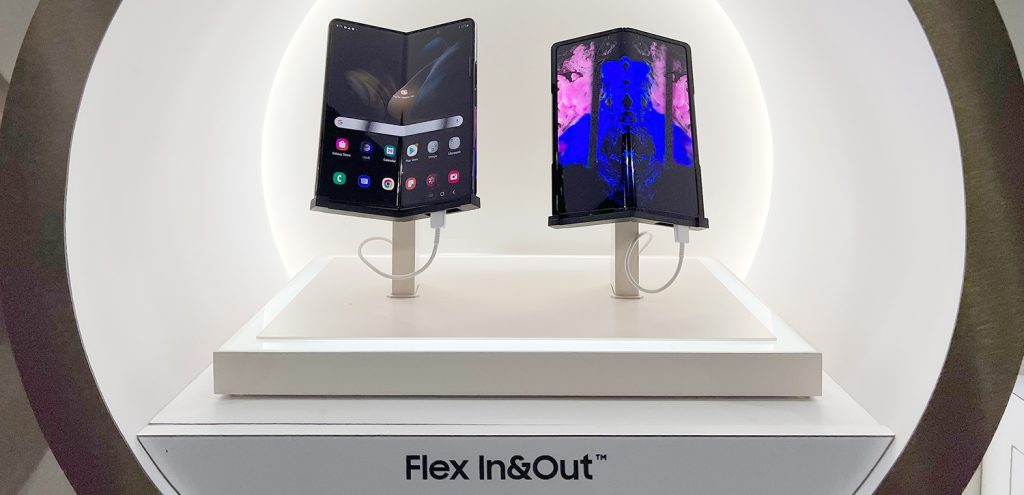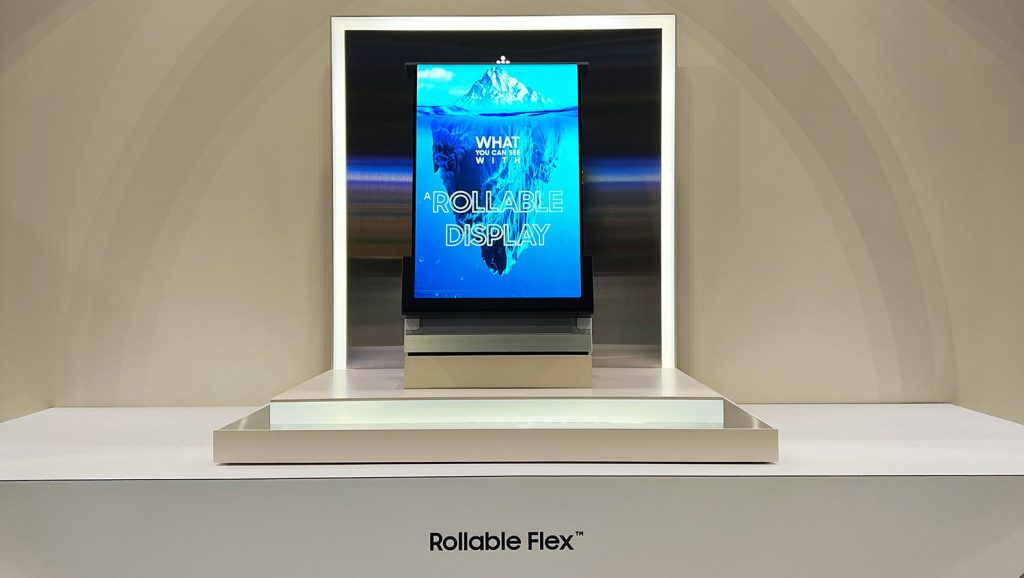
The latest Samsung advanced display tech has been announced, all of which will be made available to consumer electronics clients like Apple. The Korean company’s significant lead in screen technology means that it is still Apple’s primary display supplier.
The new features include a rollable screen (above), and an embedded fingerprint reader which would allow you to unlock your device by touching literally anywhere on the screen …
Samsung advanced display tech
Samsung Display chose the long-running SID Display Week to announce three new innovations, which companies like Apple would be able to buy for future devices if desired.

Sensor OLED Display
The one with the most obvious application for Apple is the Sensor OLED Display. This would potentially allow iPhones to offer a version of Touch ID which would not only work on the screen, but anywhere on the screen, rather than in a specific place.
Samsung Display will also unveil a new Sensor OLED Display that can recognize fingerprints anywhere on the screen […] Typically, fingerprint sensors in smartphones are attached under the panel as a separate module from the panel, but Samsung Display embedded the light-sensing organic photodiode (OPD) into the panel itself.
With this one, the devil may be in the detail. Touch ID is a far more sophisticated system than the much cruder fingerprint readers Samsung has used in its own devices in the past, and Google’s in-screen readers on Pixel devices have also had issues, so it’s unclear as yet whether the tech could meet Apple’s security and reliability standards.
But the Sensor OLED Display also offers another feature which Apple is believed to have been working on for a future Apple Watch: Blood pressure monitoring.
To be clear, it appears from Samsung’s description that Apple would not be able to use the tech on the Watch, as it requires one finger from each hand. But it would enable blood pressure readings on an iPhone.
Sensor OLED Display can measure the user’s heart rate, blood pressure and stress level simply with the touch of two fingers. OLED light is reflected differently depending on the contraction and relaxation of the blood vessels inside the finger, and when it returns to the panel, the OPD recognizes it and converts it into health information. Samsung Display is the first to unveil panel technology that can simultaneously sense fingerprints and biometric information.
“To accurately measure a person’s blood pressure, it is necessary to measure the blood pressure of both arms,” said a Samsung Display. “The Sensor OLED display can simultaneously sense the fingers of both hands, providing more accurate health information than existing wearable devices.”

Flex In & Out two-way folding smartphone screen
Samsung’s track record with folding phones to date hasn’t exactly been confidence-inspiring. The launch of the first Galaxy Fold model in 2019 was a complete disaster. While pre-orders went well, it was just 48 hours before major problems were found as reviewers tested the device. Samsung initially said it was delaying the launch until May before it canceled pre-orders. The company then talked about a July launch, before cancelling that, too.
The phone did eventually launch, but the reputational damage was substantial – and our sister site 9to5Google found that the biggest flaw is still present in the very latest iteration, the Galaxy Z Fold 4.
The company says it’s now come up with a new approach it calls Flex In & Out, meaning that it can be folded with the display protected on the inside, or available for use on the outside.
Flex In & Out is a new foldable phone concept that can be folded both inward and outward, 360 degrees. The [existing] ‘in-folding’ form factor, which can only be folded inward, requires a separate external panel to view information while folded, but the Flex In & Out is able to overcome that, opening up the possibility of lighter and thinner foldable phones.
This is very likely to appear first in a Samsung smartphone, so I guess we’ll have to wait and see whether it works any better than previous versions.
Slidable Flex Solo
The company has said very little indeed about this tech, and hasn’t shared a photo, but says that it’s a display “which expands from a 13-inch tablet to a 17-inch screen.”
This one would definitely sounds like it would have potential for both MacBooks and larger iPads, but since that’s as much as the company has said, it sounds like we may need to wait a while before we see how these work.
Samsung says it will also offer combination folding/sliding displays known as Flex Hybrid.

Rollable Flex
Perhaps the most spectacular of the three developments is what Samsung calls Rollable Flex.
We’ve seen rollable displays before, of course. Samsung showed prototype devices as early as 2011, and others later. We’ve also seen examples from fellow display maker TCL, as well as phone companies like Motorola and LG. The latter never came to market as the firm exited the smartphone market before it could launch the LG Rollable.
But Samsung has come up with a new version (top photo), which claims to offer truly amazing scalability.
The most eye-catching product at the show is Rollable Flex, which expands more than five times, from 49 mm to 254.4 mm (c. 2-inch to 10-inch) in length. While conventional foldable or slidable form factors offer up to three times the scalability, Rollable Flex overcomes such limitations by enabling the display to be rolled and unrolled on an O-shaped axis like a scroll.
“The biggest feature is that we were able to turn a difficult-to-carry large-sized display into a portable form factor by making it rollable,” Samsung Display explained.
Imagine a super-compact iPad with a screen which expands to almost US Letter size.
Should Apple adopt any of these technologies?
Assuming they don’t just “give good demo,” as Steve Jobs famously said while dismissing touchscreen Macs, but actually deliver in real-life use, would you like to see Apple adopt any of this display tech?
Please take our poll, and share your thoughts in the comments. You can check as many or as few items as you like.
FTC: We use income earning auto affiliate links. More.





Comments